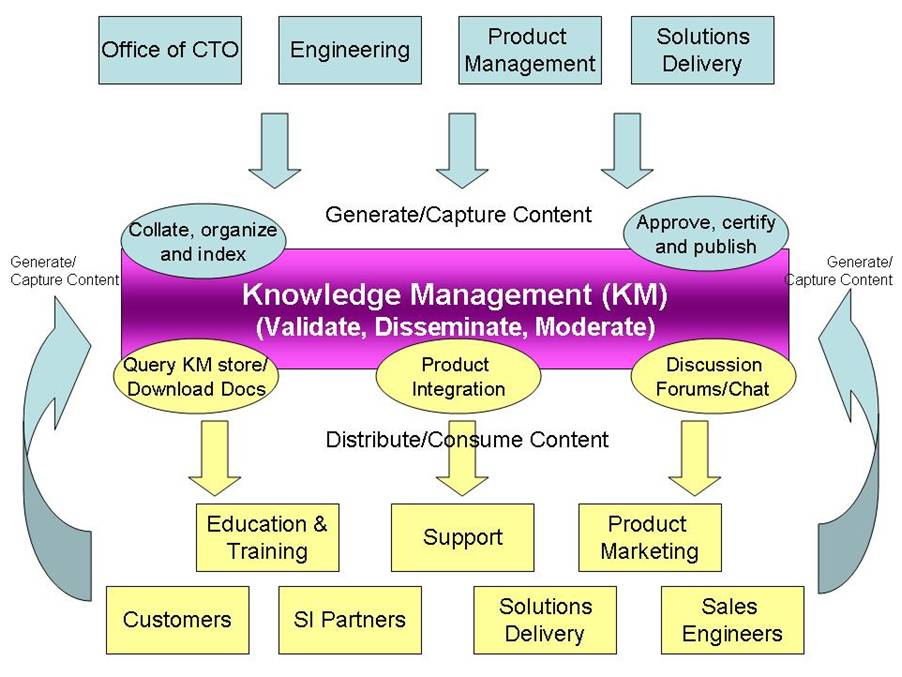This was to be a 3 part series, but I’ve received such interest and kind emails wanting to know more about KM, I’ve decided to extend this series of posts to provide more details than I intended. So this is not the final post, but rather will continue as time and questions permit.
- What & Why KM – The Challenge
- Who and How KM – The Alignment
- Identifying Experts & Assets – The Analysis
- Where & When KM – The Project (phase 1)
- Advanced KM – The Project (phase 2)
The first thing you need to do in a KM project is to determine who are the main “fountains” of knowledge or go to “experts” in your company. If you are a relatively small organization (less than 100 people) you should know this without much analysis. However, given that many organizations do not attempt or think it worth doing KM until they are much, much larger, finding out the individuals that everyone gravitates towards can be accomplished in a more formal manner.
1. Organizational Network Analysis (ONA) – Initially someone (a Product Manager would be idea) should create a map of roles in the organization that are responsible for specific processes. It adds a layer of specificity and identifies what incumbents and managers think is needed to be successful. Much like gathering requirements for products, gathering requirements for knowledge capture and dissemination requires interviewing stakeholders, documenting use cases and identifying gaps and requirements. One-on-one interviews can be supplemented by a survey which would include the following questions:
- With whom do you exchange information, documents, schedules, and other resources to get your job done?
- With whom do you discuss what is going on in the company, and who is doing what?
- From whom do you seek inputs and opinions before making a key decision?
- With whom do you discuss new ideas and innovations in our products and services?
- With whom do you discuss customer needs, requests, and feedback?
This information can be used to build a deeper interviewee list and to identify the individuals who should ultimately be part of the KM asset creation and review cycle . Of course you’ll find that participation in this survey may initially be limited, given that a) it’s not everyone’s priority to participate b) there may be a lot of skepticism about the gathering of this type of data and the KM project in general. It is the responsibility of the Executive team to do their best to encourage participation, but you can offer an incentive or two. For example, I offered $50 Amazon gift certificates to every 10th survey received back (in the order in which they were received) and ultimately got 80% participation by my company.
2. Knowledge Inventory Map – Next an inventory of all knowledge assets and the form they are in should be defined to ultimately help in the gap identification process. This can be done by trolling the intranet, documentation, training assets, product marketing, best practices docs from solutions delivery, customer FAQs, CRM knowledge base and more. This can be quite frustrating as the discovery process will reveal multiple versions of the same document, no idea of which is more accurate. All of which is contributes greatly to exactly why the company needs this KM process.
When all this has been accomplished a framework for the contributing organizations (and identified individuals) can be visually mapped out. An example can be seen in the graphic below:
In my next post I will dive into this diagram and detail the design of a central knowledge repository that helps align and make accessible all of the knowledge within an organization.

